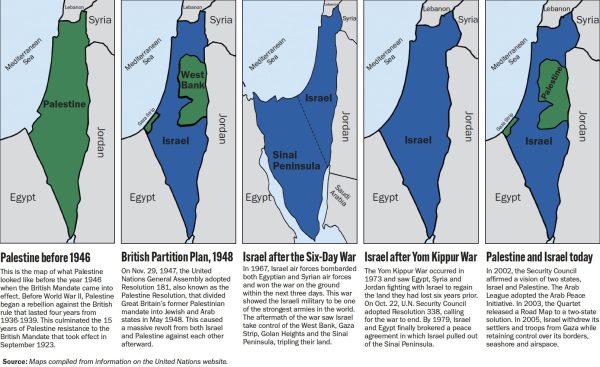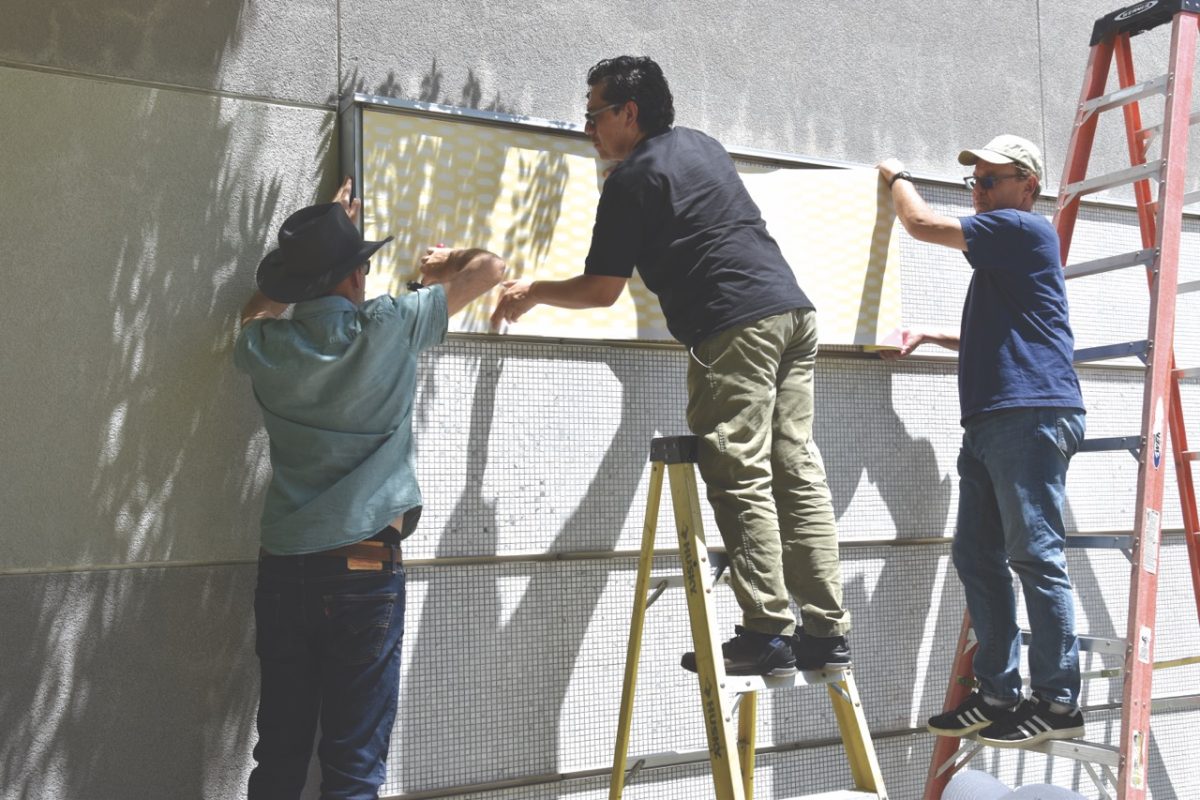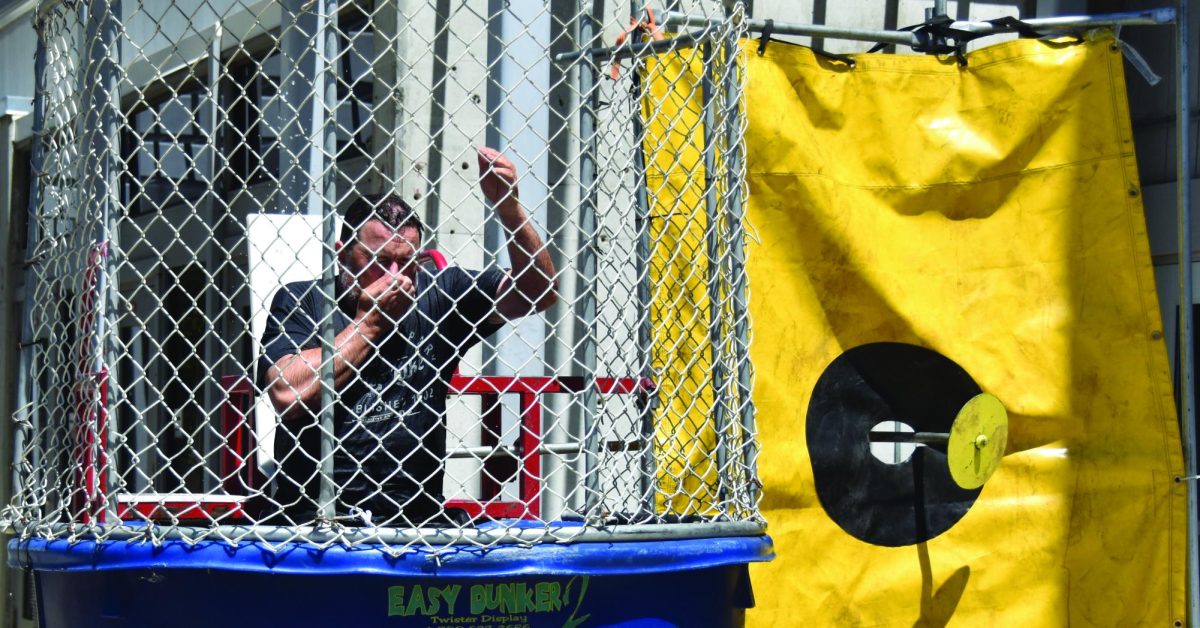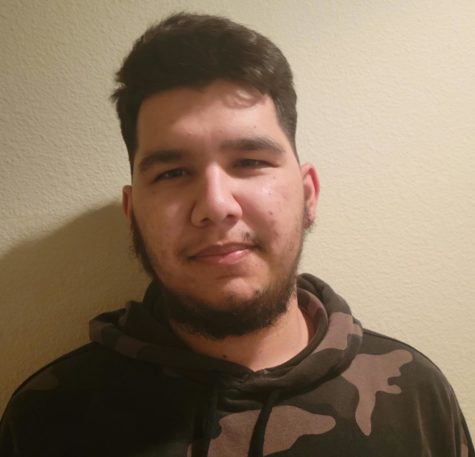The Israeli-Palestinian conflict has been one of the longest-running and most controversial in the world. Since the Oct. 7 attacks and the retaliation from Israel in Gaza, its been in one of its most bloodiest time in its already-bloody history.
The conflict is between two self-determination movements — the Jewish Zionist project and the Palestinian nationalist project — that lay claim to the same territory. But it’s so much more complicated than that, with seemingly every fact and historical detail small and large litigated by the two sides and their defenders.
This guide to the complete history of the conflict is meant to give a beginning for you to better understand the tremendously complicated subject. The guide is meant for you to make your own opinions and use the knowledge to the best of your ability.
Here is the complete history of the Israel-Palestine conflict:
1947 – United Nations adopted Resolution 181, also known as the Partition Plan, which divided Palestine into an Arab and a Jewish state. This resolution was succeeded almost immediately with violence.
1949 – The first Arab-Israeli war comes to an end with Israel’s victory. However, 750,000 Palestinians were displaced, and the territory was divided into three parts: State of Israel, the West Bank (of the Jordan River) and the Gaza Strip.
1956 – Following the 1956 Suez crisis and Israel’s invasion of the Sinai Peninsula, Egypt, Jordan and Syria signed mutual defense pacts in anticipation of a possible mobilization of Israeli troops.
1967 – Israel attacked Egyptian and Syrian air forces, starting a six-day war. After the war, Israel gained control of the Sinai Peninsula and the Gaza Strip from Egypt; the West Bank and East Jerusalem from Jordan; and the Golan Heights from Syria.
1973 – The Yom Kippur War saw Egypt and Syria launch a surprise two-front attack on Israel to regain lost territory. The conflict didn’t result in significant gains for any country, but Egyptian President Anwar al-Sadat declared it a victory as it allowed for Egypt and Syria to negotiate over previously ceded territory.
1979 – The Camp David summit saw representatives from Egypt and Israel sign the Camp David Accords, a peace treaty that ended the 30-year conflict between Egypt and Israel. While the accords made significant progress, translating the documents into a peace treaty proved daunting.
1987 – Palestinians living in the West Bank and the Gaza Strip rose up against the Israeli government in what is known as the first intifada. While many Israelis were outraged by the Palestinian victory, this intifada created consensus for peace negotiations in the 1990s.
1993 – Oslo I Accords set up a framework for the Palestinians to govern themselves in the West Bank and Gaza, and enabled mutual recognition between Palestine and Israel. This wouldn’t last long, however.
1995 – Oslo II Accords expanded on the first accords, adding provisions that mandated the complete withdrawal of Israel from six cities and 450 towns in the West Bank. It also called for cooperation and the release of Palestinian detainees.
2000 – Due to Palestinian grievance over Israel’s control over the West Bank, a stagnating peace process and former Israel Prime Minister Ariel Sharon’s visit to the Al-Aqsa mosque, in September 2000 Palestinians launched the second intifada which lasted until 2005.
2002 – Israel constructed a barrier wall around the West Bank despite opposition from the International Court of Justice and the International Criminal Court.
2006 – Hamas won the Palestinian Authority’s parliamentary election over longtime majority party Fatah. The U.S. and European Union didn’t acknowledge Hamas’ electoral victory, as the group has been considered a terrorist organization by western governments since the late 1990s.
2007 – Failed peace talks and deadly confrontations culminated in an agreement to reconcile. Fatah entered in a unity government with Hamas in 2014. Israel boycotted Hamas, cut diplomatic ties, withheld the Palestinian Authority’s tax revenues and international donor funding, and listed them as a terrorist organization.
2014 – Clashes in the Palestinian territories occurred as a military confrontation between the Israeli military and Hamas saw Hamas firing nearly 3,000 rockets at Israel, and Israel retaliating with a major offensive in Gaza. In August, a cease-fire was brokered by Egypt, but only after 73 Israelis and 2,251 Palestinians were killed.
2015 – More violence occurred and Palestinian President Mahmoud Abbas of Fatah announced that Palestinians would no longer be bound by the territorial divisions created in the Oslo accords.
2018 – From March to May, Protests were held by the Palestinians between the Gaza strip and Israel. Final protest coincided with the 70th anniversary of the Nakba, the Palestinian exodus that accompanied Israeli independence.
2018 – In May, fighting broke out again between Hamas and the Israel Defense Force in the worst period of violence since 2014. Before reaching a cease-fire, militants in Gaza fired over 100 rockets into Israel; Israel responded with strikes on more than 50 targets in Gaza during the 24-hour flare-up.
2018 – The Trump administration canceled funding for the U.N. Relief and Works Agency and relocated the U.S. embassy from Tel Aviv to Jerusalem. The decision to move the U.S. embassy was met with applause from the Israeli leadership but condemned by Palestinian leaders and others in the Middle East and Europe.
2020 – The Trump administration released the “Peace to Prosperity” plan, which was rejected by Palestinians due to its support for future Israeli annexation of settlements in the West Bank and control over an “undivided” Jerusalem.
2020 – United Arab Emirates and Bahrain agreed to normalize relations with Israel following Egypt in 1979 and Jordan in 1994. The Abraham Accords has the U.S. hosting Israel and several Arab states for ministerial talks in Warsaw, Poland, about the future of peace in the Middle East. Palestinian leader Mahmoud Abbas of Fatah rejected the accords as did Hamas.
2021 – In April, Palestinians protested the pending evictions of six Arab families from a neighborhood, and residents of Sheikh Jarrah began to host nightly sit-ins. In early May, after a court ruled in favor of the evictions, the protests expanded, with Israeli police deploying force against demonstrators.
2021 – In May, three separate occasions of fighting broke out that left hundreds dead and thousands injured. On the May 7 attacks on the Al-Aqsa Mosque, hundreds of Palestinians were wounded during the month of Ramadan. On the May 10 attack, bombs were launched by both sides killing more than 20 Palestinians. On May 21, a cease-fire was agreed to.
2022 – Israel appoints the leader of the coalition government Benjamin Netanyahu as their Prime Minister. His swearing in marks a personal return to power and the arrival of a government that has sparked fear among Palestinians as well as left-wing Israelis. He said that an end to the Arab-Israeli conflict would be his “top priority.”
2023 – On Oct. 7, terrorist attacks on a music festival and Israeli neighborhoods along the Gaza Strip killed and injured thousands. Following the attack, Israel declared they were at war and began an incursion into Gaza to destroy Hamas infrastructure. Over 11,500 people have been killed since the initial attack, according to Gaza health authorities.




















